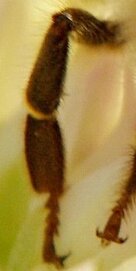
If anyone these days wants to call you “The Bee’s Knees” ‒ which is unlikely ‒ ask them to find another term of endearment to designate you as the “favorite” or “coolest” person they know. Bees do have knees, but based on the photo below, the nicest inference that can be made is that you need to shave your legs. The worst? You tell me.
The Bee’s Knees – Image Source
photocontest.smithsonianmag.coml/bees-knees

The Cat’s Pajamas – Image Source:
mashable.com/archive/cats-in-pajamas
But this blog isn’t about bee’s knees or cat’s pajamas. It is about
honey bees.
NATIONAL HONEY BEE DAY
In 2023, National Honey Bee Day occurs August 19. The event was started in 2009 by a small group of beekeepers who petitioned for and obtained a formal proclamation by the USDA honoring honey bees and beekeeping.
Although this observance day was created primarily to focus on the honey production and bee keeping industry, the day also provides an opportunity to foster awareness among the general public of the importance of the honey bee to human society.
July 10 is Don’t Step on a Bee Day, created by Thomas and Ruth Roy is a reminder to be mindful of honey bees and their importance to our ecosystem. In addition, my personal advice is not to sit on a bumble bee in shorts. I did when I was seven and it’s one of the least pleasant of my childhood memories.
Okay. Most people know about honey bees, but there are many interesting things about them you may not know.
ANCIENT HISTORY
Scientists claim that bees have been producing honey for at least 150 million years, so they were around when the first homosapiens developed about 300,000 years ago. A cave in the Iberian System Mountain Range has been discovered with a painting of prehistoric humans gathering honey. The drawing has been dated from 7,500 to 15,000 years ago.

▲ A person collecting honey from a beehive in a 8,000-year-old
prehistoric cave painting in the l’Aranya Caves, Valencia, Spain Common Honey Bee ▼
mage source: pinterest.com/pin/184295809740881720/ Image Source: britannica.com/animal/honeybee
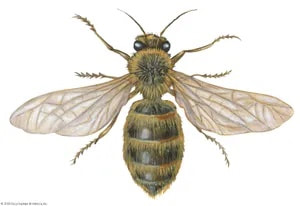
Science has identified over 20,000 species of bees (genus Apis), and the honey bee, among the 7 species and 44 subspecies, is the most important to humans. According to The National Wildlife Foundation, the honey bee originated in Eurasia and was not native to North America. Honey been were imported to North America from Europe in the 17th Century.
Like all insects, bees have six legs. They also have two wings and five eyes ‒ two, large, compound eyes and three simple eyes (or ocelli), located on top of the head. Keen eyesight is complemented by two sensitive odor-detecting antennae. Bees have ten times as many scent receptors as they do taste receptors, which makes it clear that pheromones play a strong role in the day-to-day life of bees.
Honey bees never sleep and can fly fifteen to twenty miles per hour. Their wings beat 11,400 times in one minute, making them noisy. You may hear the bee before you see it. On every foraging trip, a bee will visit 50-100 flowers to collect nectar.
Honey bees live only six weeks. The first three weeks worker bees spend working in the hive. The last three weeks of live are spent collecting and delivering nectar. A single bee will produce only 1½ teaspoons of honey during its life (i.e. approximately 4/1000 of a teaspoon of honey per day). honeybeehobbyist.com/how-much-honey-do-bees-make/
The drones (male bees) do pretty much nothing except attempt to mate with the queen.
The queen’s purpose is reproduction. She will only leave the hive once in her lifetime to mate. Of course, she is the largest bee in the hive, the other residents being workers and drones. She can lay up to 2,000 eggs per day, twice her own body weight. In her lifetime she will lay about 800,000 eggs. The queen can also select the gender of the larvae. Most larvae that will be produced will be female.
The worker bees and drones’ diet is made up of honey and pollen. Honey provides high energy while the proteins in pollen provide essential amino acids. The queen diet is rich in honey providing fertility. Royal jelly is produced only for the queen to eat giving her added carbohydrates.
IMPORTANCE OF HONEY BEES
Although honey bees produce honey and other products, the most important contribution of bees is the pollination of food crops. This process is what later yields fruits, vegetables, and seeds. Eighty percent of the pollination of the fruits, vegetables and seed crops in the U.S. is accomplished by honeybees.
However, of those crops which do require bee pollination, squash and pumpkins are important food sources for millions of people around the world. The rest are primarily fruits and nuts, and while they are important to nutrition and overall food supply, human survival doesn’t depend on them. Also, crops requiring bee pollination don’t depend entirely on the honey bee, since other bees perform the same function.
However, reliable sources indicate that the disappearance of the honey bee could cause the total loss of at least seven major crops in the United States whose commercial pollination is done using honey bees.
BEE COMMUNICATION
Bees have a complex method of communication with each other. The sole purpose of the communication is focused on the good of the hive. The bees exchange information that either leads to increased nectar collection or better processing of available nectar into honey for the hive. It also allows for warnings and alarms. Bee communicate through three methods.
● Strong smells: Bees release pheromones, each with a specific meaning, to communicate. Example: When bees have to use their stinger, the action of stinging triggers information being sent to other bees in the colony.
● Dances
•The waggle dance: The bee “waggle dance“ occurs to signal to each other where to find more nectar. The dance can provide directional information, how far away the new food source is from the colony, quality of the resource, and other information necessary for distributing work through the hive.
• The tremble dance: This dance signals to other workers that is it time to help process more nectar. It can also be a signal to other workers that there is so much honey that more foraging members are needed.
● Scent memory: Bees carry the scent of other flowers with them back to the hive, assisting the other workers in being able to find the new food source.
Each hive has its own scent. The hive’s guard bees check for a certain pheromone to be present for all bees in hive and other bees without those scents are considered outsiders and denied access.
There is an alarm pheromone which is utilized to alert and immobilize bees to possible threats to the hive. The alarm pheromone is so strong that beekeepers have to use smoke in order to keep the bees calm.
HONEY AND OTHER PRODUCTS
● HONEY
We all know about honey made by bees. Yum! So, while we gulp down honey in all sorts of easy ways, a hive of 50,000 honey bees had to fly over 55,000 miles to gather 5.93 pounds of nectar from 1,185,000 flowers to make 5.4 gallons of honey in a year.
Bees are known to raid other hives and steal honey. Bees “rob” honey from other bees if honey from another hive is available (say, if a beekeeper leaves a hive open), or if times are lean. However, if a guard bee from the robbed hive catches an interloper (detecting the foreign smell of the intruder), the two will engage in battle—stinging to the death.
If the robber makes it into the hive unnoticed, she will gain the scent of the hive (and learn the entrance well enough) that she can come in and out without being detected as an intruder.
● MEAD
Mead is a product made from fermented honey. Mix the fermented honey with water and mead yeast and you have “the drink of the Gods.” It is sometimes called, incorrectly, honey wine. Honey wine has 20% less honey.
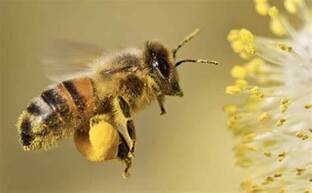
Bees gather bee pollens which they use to made bee bread, a food source for bees. Bee farmers set up pollen traps at the entrances of beehives to collect the small balls of pollens that are attached to the bee’s legs. Pollens are used for medical purposes such as reducing inflammation, strengthening the immune system, fighting bacterial infections, and other health supplements. Bee with Pollen Sac -- Image Source: stakich.com/?afmc=8b
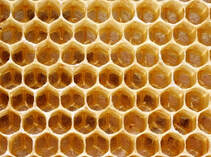
Younger worker bees produce beeswax from their abdominal glands for the purpose of building the walls of the honeycomb. Beeswax is one of the most common, most practical, and most multi-purpose bee products. It is used in cosmetic products such as lip balms, body butters and moisturizers, or even for pharmaceutical purposes to heal itch, scrapes and burns. Beeswax is also used to make candles and to polish wood.
● ROYAL JELLY
Royal jelly is produced by nurse bees which secrete this white fluid from their head glands for the queen bee to eat. It is highly nutritious which enables the bees to grow fast. It may be beneficial for human health as well and is used more in traditional medicine than Western medicine.
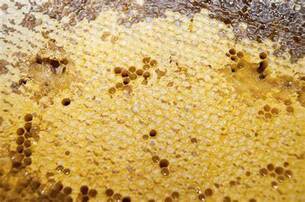
healing of wounds due to the presence of Image Source: bing.com/images/search?views.com
fibroblasts.” manukahoney.com.sg/bee-products
● PROPOLIS
Propolis is a mixture of resins and sap from flowers and trees combined the secretions and beeswax of worker bees. The bees use it to seal openings in their beehive for protection, and especially when their hives are situated on trees where ants and insects are common. Ants and insects will get entrapped within the sticky liquid when they try to enter the beehive.
It is known to humans for its antiseptic and antibacterial properties, and is often used for sore throats, ulcers, and on wounds. It is available in three forms such as tablets, pills, and liquids.
CONSERVATION STATUS
Regardless of what you may have heard, honey bees are not on the endangered list. However, it is true that eight other species of bees have been placed on this endangered list dues to habitat loss.
The Washington Post did an extensive study, published in 2017, that shows the numbers of bees close to historical highs. USDA reports that the number of honey bee colonies in the US on April 1, 2021, was 2.86 million colonies. Honeybees are not endangered, mainly because they are globally distributed and primarily managed by beekeepers. www.treehugger.com/honeybees-endangered
The numbers of honey bees are determined by the number of beekeepers. Because most bee keeping in the US is commercial business, the business owners take steps to assure adequate numbers and have more capability to protect the bee from loss of habitat.
Just because the honey bee is not at risk of extinction ← there are more honey bees on the planet today than at any time in history. scientificamerican.com/honey-bees/ ←. that is no reason to ignore the potential impacts of pollution, pesticides, pathogens, and parasites.
WORDS OF WARNING: THE AFRICANIZED HONEY BEE
Africanized Honey Bees are a hybrid species of bee, derived from a combination of the original African subspecies and European honey bees. When they were introduced to Brazil in 1956, twenty-six swarms escaped quarantine and have spread across parts of South America, Central America and the American Southwest.
They are dubbed as “Killer Bees” because of their aggressive behavior. Unfortunately, these bees do not look any different from ordinary honey bees.
Africanized honey bees are more likely to sting in defense and will travel up to half a mile when provoked … in other words they will chase after you if you irritate them. They tend to swarm in large numbers, and when subjected to loud noises or vibrations, these bees become incredibly agitated and attack anything within a 75-foot radius. Their aggressive behavior makes them a risk to human health and agriculture, as they have been known to behave unpredictably when disturbed or threatened. In humans, this can result in severe stings leading to anaphylactic shock and other injuries.
Africanized Honey Bees are known for superior resistance to disease and improved capabilities in gathering nectar while producing more honey than other bee species. For that they are becoming popular with beekeepers. Finally, it’s important to contact local authorities if you suspect there is an active hive located nearby since only professionals should attempt to remove it safely and effectively
WORLD BEE DAY
There is a World Bee Day which takes place on May 20 for the purpose of raising awareness of the essential role bees, and other pollinators play in keeping people and the planet healthy. The date coincides with the birthday of Anton Janša, who in the 18th century pioneered modern beekeeping techniques in his native Slovenia and praised the bees for their ability to work so hard while needing so little attention.
JUST SAYIN’ !
https://en.wikipedia.org/wiki/National_Honey_Bee_Day
https://www.treehugger.com/are-honeybees-endangered-5119259
https://www.nwf.org/Home/Magazines/National-Wildlife/2021/June-July/Gardening/Honey-Bees
https://www.boredpanda.com/honey-bee-population-increase/?utm_source=bing&utm_medium=organic&utm_campaign=organic
https://www.scientificamerican.com/article/the-problem-with-honey-bees/
https://www.thereisadayforthat.com/holidays/usa/national-honey-bee-day
https://nypost.com/2021/09/18/why-the-honey-bee-apocalypse-is-based-on-a-lie/
https://www.worldatlas.com/articles/why-are-honey-bees-important-to-us.html
https://foe.org/blog/why-are-bees-important/
https://english-grammar-lessons.com/bees-knees-meaning/
https://www.phrases.org.uk/meanings/the-bees-knees.html
https://www.medicalnewstoday.com/articles/why-are-bees-important-to-humans
https://www.planetbee.org/why-we-need-bees
https://wildlifewelcome.com/bees/are-honey-bees-endangered/
https://kare.co.nz/honey-bees/interesting-facts-about-honey-bees/
https://www.unep.org/news-and-stories/story/why-bees-are-essential-people-and-planet
https://a-z-animals.com/blog/discover-the-oldest-honey-ever-found-from-king-tuts-tomb/
https://bigislandbees.com/blogs/bee-blog/14137349-interesting-bee-honey-facts
https://english-grammar-lessons.com/bees-knees-meaning/
https://supersimple.com/article/10-fun-facts-about-bees/
https://manukahoney.com.sg/bee-products-other-than-honey/
https://www.thoughtco.com/fascinating-facts-about-honey-bees-4165293
https://www.atlasobscura.com/articles/honey-cave-painting
https://www.worldatlas.com/articles/why-are-honey-bees-important-to-us.html
https://www.nwf.org/Educational-Resources/Wildlife-Guide/Invertebrates/Bees
https://beeswiki.com/how-do-bees-communicate/#:~:text=There%20are%20three%20primary%20methods%20of%20bee%20communication%3A,being%20able%20to%20find%20the%20new%20food%20source.
https://theconversation.com/when-did-we-become-fully-human-what-fossils-and-dna-tell-us-about-the-evolution-of-modern-intelligence-143717
https://honeybeehobbyist.com/how-much-honey-do-bees-make/#:~:text=How%20much%20honey%20does%20a%20bee%20make%20in,produce%205.4%20gallons%20of%20honey%20in%20a%20year.
Photos
https://photocontest.smithsonianmag.com/photocontest/detail/bees-knees-1/
https://en.wikipedia.org/wiki/National_Honey_Bee_Day
https://www.britannica.com/animal/honeybee
https://wildlifewelcome.com/bees/are-honey-bees-endangered
https://stakich.com/?afmc=8b
https://www.bing.com/images/search?view=detailV2&ccid=OqxI%2feS4&id=
http://www.buzzingacrossamerica.com/2015/12/propolis-glue-of-hive.html
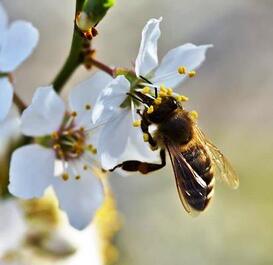
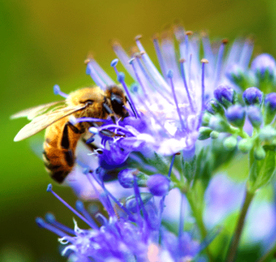
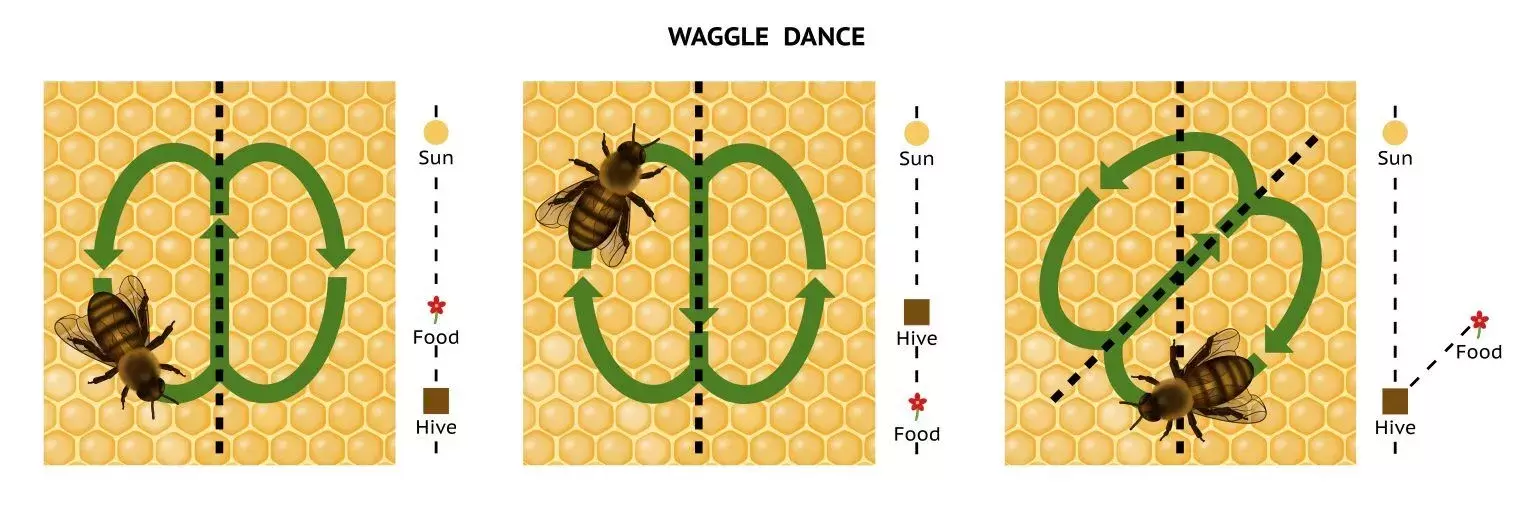
 RSS Feed
RSS Feed